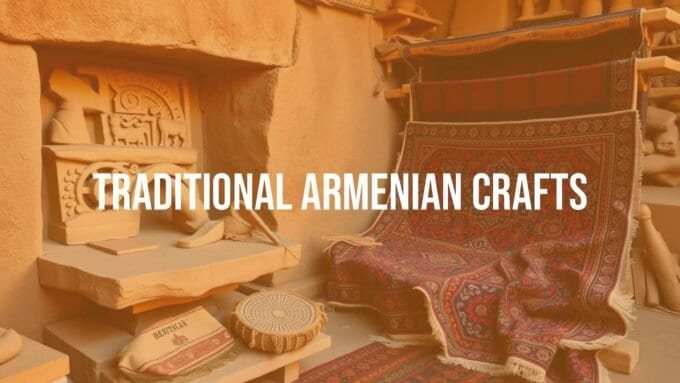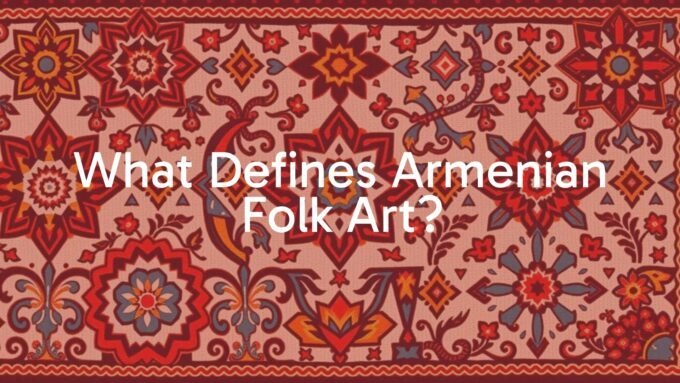Armenian historical sites are places that show thousands of years of human effort, belief, and survival. They are more than old walls; they are living records of a nation at a crossroads of empires that kept its own identity. From pre-Christian temples to medieval monasteries carved from cliffs, these places offer a clear path through time. They show Armenia’s early adoption of Christianity and its strong cultural life, often set in striking mountain scenery. Walking through them feels like moving through the pages of Armenian history, meeting saints, rulers, and everyday people who shaped the land.
Historical significance of Armenian heritage
Armenia holds a special place in history. This small country in the Caucasus was the first to adopt Christianity as a state religion in the early 4th century CE. That choice shaped its buildings, art, and culture, leading to some of the oldest Christian churches and monasteries anywhere. Armenian heritage also reaches back before Christianity, with Urartian fortresses and Hellenistic temples still standing. Its location between Europe and Asia brought trade and ideas, as well as many invasions and occupations, including seven decades under the Soviet Union. Through it all, Armenia has protected and shared its historic sites so their stories continue.
Architectural styles found in Armenian sites
Armenian sites reflect many styles across the ages. Early Christian basilicas like Yererouk show the first steps of church design. After Christianity became the state faith, a distinct style appeared, marked by solid stonework using local volcanic tuff in colors from black to deep red. Monasteries such as Haghpat, Sanahin, and Geghard mix Byzantine church ideas with local Caucasian traditions. You will see domed halls, detailed carvings (khachkars), and churches cut into the rock. Later, trade shaped design too, as seen at the Orbelian Caravanserai, which blended function with decoration. Soviet-era monuments and the wooden balconies and cobbled streets of Dilijan Old Town add newer layers, linking past and present.

Religious and cultural importance of landmarks
Armenia’s churches and monasteries are central to its faith, language, and identity. Etchmiadzin Cathedral, often called the “Vatican of Armenia,” is the heart of the Armenian Apostolic Church and a place of pilgrimage. Monasteries like Tatev served as places of prayer and centers of learning, where monks carefully copied manuscripts and protected knowledge in hard times. Pre-Christian sites like the Temple of Garni show older beliefs, with a clear Hellenistic influence and dedication to the sun god Mihr. These places fill Armenian folklore and national memory, showing resilience, art, and a deep link to the past. Visitors find history, faith, and culture coming together in meaningful ways.
Categories of Armenian historical sites
Armenia’s heritage includes many types of places, each telling its own story. You will find:
- Ancient temples and fortresses
- Medieval monasteries and churches
- Caravanserais, bridges, and trade routes
- Memorials and museums
From early stone complexes to modern memorials, there is much to explore for anyone interested in architecture, religion, trade, or memory.
Ancient temples and fortresses
Before Christianity, Armenia had strong spiritual traditions and defenses. The best-known pagan site is the 1st-century CE Temple of Garni, dedicated to the sun god Mihr. Its Ionic columns and carvings, set on a dramatic ridge above the Azat River Gorge, show clear ties to the Greco-Roman world. An earthquake in 1679 damaged it, but careful 20th-century work rebuilt the temple so visitors can see this rare pre-Christian survivor. Across the country stand the remains of ancient fortresses, built by Urartian rulers and later dynasties. These large stone sites served as seats of power and defense, hinting at the reach and organization of early Armenian states.
Zorats Karer, sometimes called the “Armenian Stonehenge,” is another standout. This megalithic field may date back to around 7600 BC and includes more than 200 basalt stones arranged in arcs. Some stones have holes that may have helped track the moon and solstices, suggesting advanced sky-watching. The nearby ruins of Dvin, once a capital and home of the Catholicos, reveal an influential city active from the 4th century until Mongol destruction in the 13th century.
Medieval monasteries and churches
After Armenia adopted Christianity, monastic life flourished. Geghard Monastery, partly carved into the cliffs of the Azat Gorge, is both an architectural wonder and a revered site linked by tradition to the Spear of Longinus. Rock-cut chapels, tombs, and khachkars show an impressive blend of stone craft and devotion.
The UNESCO-listed Haghpat and Sanahin monasteries, founded in the 10th century under Queen Khosrovanush, display a rich mix of Byzantine and local styles. The complexes include churches, chapels, bell towers, libraries, and detailed carvings and frescoes. Noravank, set high in the Amaghu Canyon, stands out for its red stone and a two-story church with an outside staircase. Tatev, founded in the 9th century and reachable by the “Wings of Tatev” cableway, was a key center of learning that helped keep Armenian culture alive. These sites often sit in dramatic landscapes and shaped Armenian faith, education, and art.

Caravanserais, bridges, and trade routes
Armenia sat on the Silk Road, connecting goods, ideas, and beliefs between East and West. This history lives on in caravanserais and old bridges. The 14th-century Orbelian Caravanserai is among the best-preserved roadside inns, offering shelter to traders and their animals. Its carvings show that these stops were places of art and cultural contact as well as rest.
Many old stone bridges span deep gorges, marking the paths of trade and travel. Though they are less famous than monasteries, their wide presence shows how communities stayed linked. Built with strong stonework to last, they supported movement and trade across tough terrain. Vineyards and historic winemaking areas near these roads, including around the Orbelian Caravanserai, add another layer to Armenia’s economic story.
Memorials and museums
Armenia also marks painful chapters of its past. The Armenian Genocide Museum and the Tsitsernakaberd Memorial in Yerevan honor the 1.5 million Armenians killed between 1915 and 1923. The museum follows a timeline that explains the position of Armenians in the Ottoman Empire and the attempt to destroy them, an event that led to the term “genocide.” The memorial’s eternal flame and monument offer a quiet place to reflect on loss and memory.
Museums such as the History Museum of Armenia in Yerevan hold large collections covering archaeology, ethnography, and art, tracing the story from Urartu to medieval kingdoms and beyond. The Mother Armenia Monument in Victoria Park, with its tall copper statue and the Military Museum inside its base, stands for national strength and survival. These places help people learn about the past and pass on knowledge to the next generation.
UNESCO World Heritage sites in Armenia
UNESCO recognizes several Armenian sites for their outstanding value. Armenia joined the World Heritage Convention on September 5, 1993. Three cultural listings highlight monasteries, churches, and related places. The status brings global attention and protection for the future.
| Site | Province | Inscription year(s) | Type |
|---|---|---|---|
| Monasteries of Haghpat and Sanahin | Lori | 1996 (Haghpat), 2000 (Sanahin added) | Monastic complexes |
| Geghard Monastery and the Upper Azat Valley | Kotayk | 2000 | Rock-cut monastery and landscape |
| Cathedral and Churches of Echmiadzin and the Archaeological Site of Zvartnots | Armavir | 2000 | Religious sites and ruins |
Monasteries of Haghpat and Sanahin
In Lori Province, Haghpat and Sanahin were the first Armenian entries on the UNESCO list (1996 for Haghpat; Sanahin added in 2000). Built in the late 10th century with support from Queen Khosrovanush, these monasteries grew through the 13th century into major spiritual and educational centers.
Their design blends Byzantine church forms with local styles from the Caucasus. The result is solid yet refined buildings with detailed carvings, domes, and large gavit halls. They were key places for study, manuscript art, and theology, helping keep Armenian culture strong during unstable times. Their placement above deep valleys adds both protection and calm, drawing visitors for centuries.
Geghard Monastery and the Upper Azat Valley
Geghard and the Upper Azat Valley joined the UNESCO list in 2000. The monastery sits in a dramatic gorge, with much of it cut straight into the rock. Tradition links its beginnings to the 4th century and Saint Gregory the Illuminator, when Armenia became a Christian state.
Most of what stands today dates to the 13th century: rock-cut churches, tombs, cells, and many khachkars. The name “Geghard” means “spear,” recalling the Holy Lance believed to have been kept here. The site is known for its mix of landscape and stonework, and for acoustics that make chants and liturgy especially moving.
Cathedral and Churches of Echmiadzin and the Archaeological Site of Zvartnots
Also inscribed in 2000, this group includes Etchmiadzin Cathedral and several churches in Vagharshapat, plus the ruins of Zvartnots. Together they show how Armenian church design started and developed.
Etchmiadzin Cathedral, founded in 301 CE, is often called the world’s oldest cathedral and is the mother church of the Armenian Apostolic Church. The site also includes Saint Gayane (630 CE), Saint Hripsime (618 CE), and Shoghakat (1694 over a 4th-century chapel). Nearby lie the remains of 7th-century Zvartnots, whose circular plan broke with common cross-shaped layouts. Though destroyed in the 10th century, its ruins still reveal a bold design that once rivaled Etchmiadzin as a pilgrimage site.
Notable Armenian historical sites you can visit
Armenia offers many places that open a window into its past, from pagan temples and cliffside monasteries to memorials. Below is a selection that helps travelers learn more about the country’s story.
Temple of Garni
About 15 miles southeast of Yerevan, the Temple of Garni is Armenia’s best-preserved pre-Christian monument. Built in the 1st century CE by King Tiridates I for the sun god Mihr, it features basalt blocks, Ionic columns, and detailed stonework that recall ancient Greece. Set high above the Azat River Gorge, it gives wide views. An earthquake in 1679 damaged it, and careful work in the 1960s and 1970s rebuilt it. Nearby are remains of a Roman bathhouse and a royal residence with mosaic floors that show scenes of daily life.
Khor Virap Monastery
Khor Virap sits near the Turkish border with Mount Ararat rising behind it. Here, legend says Saint Gregory the Illuminator was held in a deep pit for 13 years by King Tiridates III for preaching Christianity. “Khor Virap” means “deep pit.” This story is tied to Armenia’s conversion in the early 4th century CE. Today, Khor Virap is still a place of pilgrimage and offers one of the most famous views of Mount Ararat, a mountain central to Armenian identity and linked to the story of Noah’s Ark.

Noravank Monastery
Noravank stands in a narrow gorge in the Amaghu Canyon and dates to the 13th century. It is known for fine carvings, red stone, and a two-level church, Surb Astvatsatsin (Holy Mother of God), designed by the architect Momik. The outer staircase leading to the upper floor is a striking feature. Reliefs on the walls show religious scenes and figures that reflect medieval life and belief. The red cliffs around the site make the view memorable.
Tatev Monastery and Wings of Tatev Cableway
In southern Armenia, Tatev Monastery (9th century CE) grew into a leading center of learning where monks copied and preserved religious and historical texts. The complex includes fortress walls, an oil mill, a unique swaying column, and traces of frescoes linked to European artists. The “Wings of Tatev” cableway, the world’s longest reversible aerial tramway, carries visitors over the Vorotan Gorge from Halidzor village, adding a dramatic approach to the visit.
Lake Sevan and Sevanavank Monastery
Lake Sevan, the largest lake in the Caucasus and one of the world’s biggest high-altitude freshwater lakes, is central to Armenian culture. On a peninsula that used to be an island before Soviet-era irrigation lowered water levels stands Sevanavank Monastery (9th century). Its two churches, Surp Arakelots (Holy Apostles) and Surp Astvatsatsin (Holy Mother of God), overlook blue waters and mountain slopes. After independence, efforts began to raise the lake level again. Today Sevan is a key freshwater source and a favorite place for visitors seeking views and calm.
Areni-1 Cave Complex
In Armenia’s ancient wine region, the Areni-1 caves date to 5000-4000 BCE and include the world’s oldest known winery. Archaeologists found fermentation vats, presses, storage jars, and traces of red wine. The site also produced the oldest leather shoe yet discovered, preserved for about 5,500 years by the cave’s dry, cool air and layers of sheep dung. Other finds include grains, fruit, and the oldest known sample of brain tissue. Areni-1 gives a rare look at early farming, crafts, and daily life.
Goshavank and Haghartsin Monasteries
Inside Dilijan National Park, Goshavank (12th century) and Haghartsin (13th century) sit among forested hills. Goshavank, founded by scholar Mkhitar Gosh, is known for detailed khachkars and frescoes. The Surb Astvatsatsin Church there has carvings that reflect the era’s beliefs and history. The monastery was an active place of study and worship.
Haghartsin, surrounded by dense woods, offers a quiet setting. Its churches and chapels, including Surb Astvatsatsin and Surb Grigor, show clear Armenian church forms with local artistic touches. Both complexes blend stonework with nature and give access to hiking and wildlife in the national park.
Dilijan Old Town
Sometimes called the “Armenian Switzerland,” Dilijan lies in Tavush Province. Its Old Town has cobbled streets, stone houses, and wooden balconies. The area is known for mineral springs and green forests. Dilijan anchors a national park with trails leading to fortresses and khachkars, and it supports rich wildlife, including brown bears, Eurasian lynx, and gray wolves. The town shows how Armenia connects nature and culture in a calm setting.
Orbelian Caravanserai
The Orbelian (Selim) Caravanserai, built in the 14th century CE, sits on a branch of the Silk Road used by traders moving between Asia and Europe. It sheltered merchants, animals, and goods and served as a place for sharing ideas and art. The building has carved details and a small chapel within strong stone walls. Located along the M10 road heading south to the Iranian border, the route offers wide views of the Vardenyats Range. The site also lies within an old wine region, adding to its historic appeal.
Mother Armenia Monument
Overlooking Yerevan from Victoria Park, the Mother Armenia Monument symbolizes strength and watchfulness. The park first held a statue of Stalin, removed in 1967 and replaced by the current 72-foot copper figure. The tall pedestal contains the Military Museum of Armenia, which covers the country’s armed history. Military equipment around the monument points toward Turkey, reflecting long-standing tensions. The nearby lookout offers broad views of Yerevan and, on clear days, Mount Ararat. Although Mount Ararat now lies across the border, it remains a strong national symbol.
Armenian Genocide Museum and Tsitsernakaberd Memorial
In Yerevan, the Armenian Genocide Museum and the Tsitsernakaberd Memorial honor the 1.5 million victims of 1915-1923. The term “genocide,” coined by Raphael Lemkin in 1944, was influenced by these events. The museum presents a clear, chronological account through photos, documents, personal items, and witnesses’ words. The memorial includes a striking monument and an eternal flame where visitors pay respects. A visit helps explain modern Armenian identity and memory.
Preservation and challenges facing Armenian historical sites
These sites are well kept, but they face many pressures today. Age, location in a seismic zone, and political tensions in the region all play a part. Keeping them safe needs steady work, help from abroad, and strong local support.
Conservation efforts and UNESCO support
Protecting Armenia’s sites is a major job that often involves partners from outside the country. UNESCO helps by listing sites, offering guidance, and sometimes funding. Since Armenia joined the World Heritage Convention in 1993, it has worked with UNESCO on technical support and expert meetings, including help for places like the Shirak Museum and discussions on managing religious sites in Eastern Europe. The three World Heritage listings-Haghpat and Sanahin, Geghard and the Upper Azat Valley, and the Cathedral and Churches of Echmiadzin with Zvartnots-gain global attention and shared responsibility.
Work on the ground includes careful digs, reinforcing structures, restoring frescoes and carvings, and managing visitor numbers through sustainable tourism plans. The goal is to keep access open while protecting the sites for future generations.
Threats from natural disasters and conflict
Armenia sits in an earthquake zone, and ancient stone buildings, though sturdy, have suffered damage in the past. Zvartnots likely fell in the 10th century due to an earthquake, and Garni was partly destroyed in 1679. Ongoing monitoring and seismic upgrades help reduce risk. Conflicts have also harmed heritage across the region at times. While UNESCO advocates for protection during fighting, damage can still happen. Careful recording, protective work, and strong advocacy remain important to prevent permanent loss.
Importance of local community involvement
Long-term care depends greatly on people who live near these places. For locals, these sites are part of daily life and the local economy. Community roles can include guiding, hospitality, joining conservation projects, and reporting problems. School programs and workshops raise awareness and pride among residents. When tourism supports local income, people have a direct reason to protect what they have. Active communities become the first line of defense against neglect, vandalism, and poorly planned development, helping Armenia’s heritage last.















Leave a comment